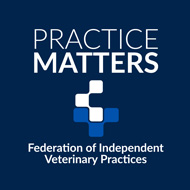Dogs Trust calls for better education on bite warning signs
Casper the Staffie cross helps Dogs Trust provide behaviour training sessions.
Dogs Trust has called for dog owners to learn more about their dog’s body language as part of its ‘Bark to School’ campaign.
The charity believes that a better understanding of canine body language will teach owners the early warning signs of dog bites in order to reduce the number of incidents.
Dogs Trust has launched its campaign as the NHS reports a rise in admissions of dog-related injuries. The charity’s rehoming centres are also seeing an increase in relinquished pets, with a quarter of those being related to unwanted behaviour.
Statistics from Dogs Trust’s latest National Dog Survey revealed that 76 per cent of dog owners were failing to recognise the early warning signs that a dog might bite them. The survey found that 71 per cent wrongly believed that they were more likely to be bitten by a dog they didn’t know than their own pet.
However, the charity says that the majority of dog bites to children aged under 14 years were from dogs which they knew.
Dogs Trust suggests that the best way to prevent bite incidents is for dog owners to develop a better understanding of their dog’s body language. It says that owners should be aware of the early warning signs of distress, including their ears going back, body becoming tense or their tail tucking under.
However, dog owners may also be missing other warning signs that a dog has become uncomfortable or worried.
For example, a common misconception is that a dog rolling over always means they want a belly rub, when it can also mean they are feeling uncomfortable and need space. Seventy-six per cent of respondents failed to identify this as a warning sign.
Two thirds of respondents did not know that a dog yawning means that they are worried and need space.
Other common behaviour signs which were misinterpreted include dogs licking their lips with their ears pulled back (59 per cent) and dogs licking their lips and turning their head away (53 per cent). Approximately a third of those surveyed thought that a dog wagging its tail meant they were always happy, when it can communicate many different emotions.
Maria Murray, associate director of prevention and community engagement at Dogs Trust, said: “Very often, dog bites in the home are preceded by what can be seen as harmless interactions, such as cuddling, hugging, or kissing the dog.
“But while we might like these things, our dogs don’t necessarily agree and will try to tell us through their body language.”
Dogs Trust hosts Dog School classes, a free Behaviour Support Line and has advice available on its website.
Image © Dogs Trust



 The Federation of Independent Veterinary Practices (FIVP) has announced that its podcast, FIVP Practice Matters, will be returning for a second series next year.
The Federation of Independent Veterinary Practices (FIVP) has announced that its podcast, FIVP Practice Matters, will be returning for a second series next year.